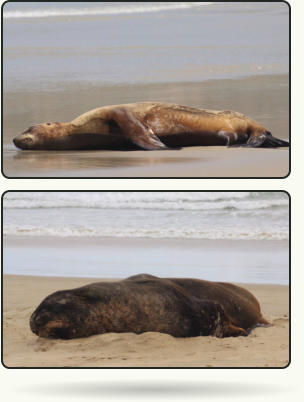

Wildlife
Rare Yellow-eyed penguin
With a population of around 5000, the Yellow Eyed Penguin (so called due to its eye colour and the yellow band around its head), is one of the rarest and most individual of the world’s 17 penguin species. Living only in New Zealand’s Southern coastal forests without an iceberg in sight, they are very shy birds that nest well away from their neighbours; most different from the other dense penguin colonies. They are very loyal birds that usually mate for life, their eggs are laid in September to November and both parents help hatch and rear the chicks. March/April is a very dangerous time for the penguins as they must stay ashore whilst moulting and wait for their new feather coats to grow. It’s not easy being a YEP, apart from the usual hungry sealion, shark or baracoutta, they were originally hunted by Maori as food and have had it pretty tough since. More and more of their forest homes have been cleared, predatory mammals have been introduced that disturb and raid nests, fishing practices affect food sources and entangle them in nets. However all is not lost, the Yellow Eyed Penguin Trust is doing their bit. They go out to sea in the morning and return an hour or so before sunset. They come in from a hard days fishing to nest in the bushes that lay just behind the beach (and the Fossil Forest).Hector’s Dolphins
The pods of Hector’s Dolphins / Papakanua that can often be seen playing in the surf at Porpoise Bay, are the smallest and rarest marine dolphin in the world. Distinctive by their black and white markings and rounded fin, with a total population of only 7,000, they are only found off New Zealand shores. Porpoise Bay is unique as it is the only place where dolphins come so close to the shore without people feeding them; they swim just outside the breaker line and often come within ten metres of the beach! They use the Bay not only to feed and rest, but as a nursery to raise their young. As these animals live and play so near the shore they are susceptible to being hurt, newborn dolphins are especially vulnerable as they swim slowly and can’t yet dive.Seals and Sea Lions
New Zealand fur seals, Hooker’s sea lions and the odd elephant seal can be found sunning themselves on the various Catlins beaches, especially at Waipap Point and Surat Bay. The only place on mainland New Zealand where all three co-exist is at Nugget Point. What is the difference between a Fur Seal and a Sea lion? Mainly size. Sea lions are bigger than Fur seals with bulls weighing around 400kg, they have a mane of blubber around their neck like a huge double chin! They are related and both have ears whereas true Seals do not. New Zealand Fur Seals and Sea lions regularly haul themselves out of the water along the Catlins coastline spending a considerable time ashore. Fur Seals waddle on all fours and prefer the rocks, Sea lions walk on their hind flippers and prefer the sand. The Fur Seal was hunted last century for skins until no colonies were left on the mainland, the population is now recovering. Adult seals sometimes leave pups on the beach while they are away fishing. Male Sea lions may be aggressive during December-February which is their breeding season even though they do not breed on the mainland.
























